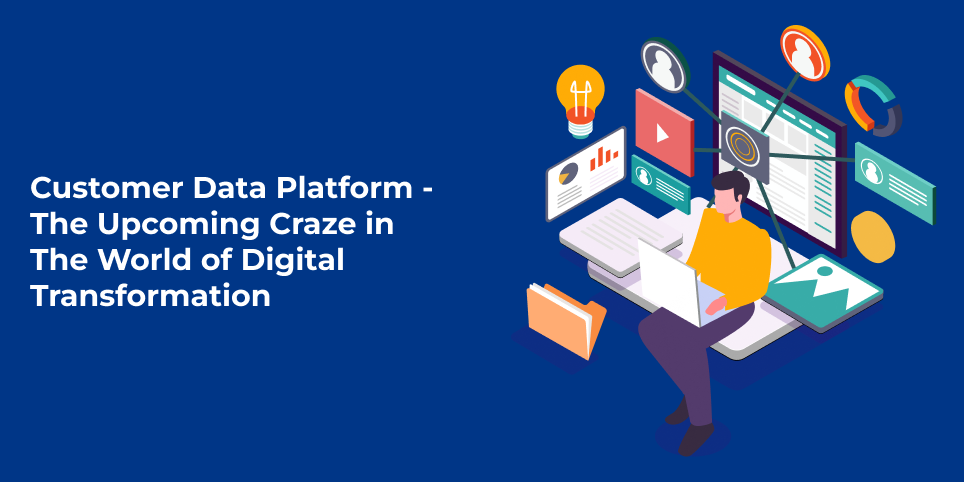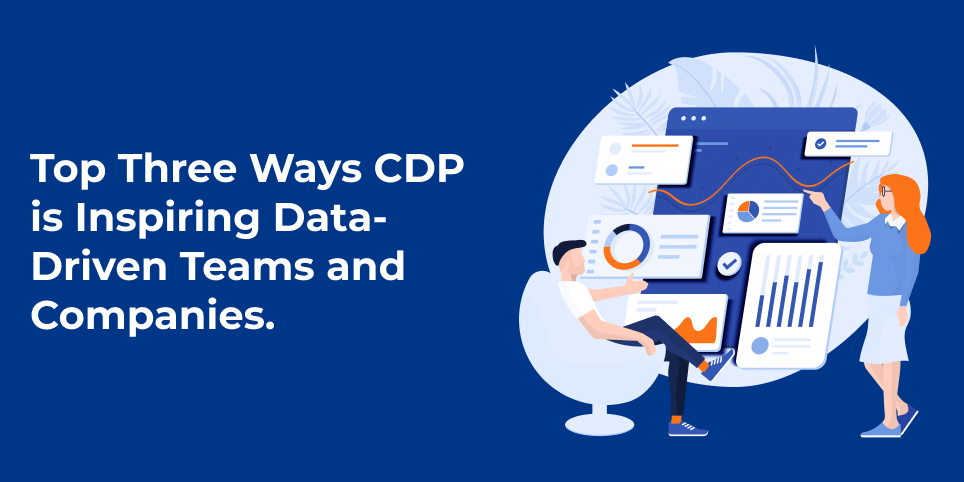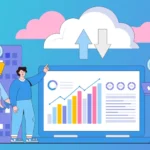
Customer Data Platform – The Upcoming Craze in The World of Digital Transformation
Back in the year 2021, when the pandemic had led to an increase in spending online time, the
companies saw the need for digital transformation acceleration. They began working on the
projects that previously were running at a slow pace. Realizing how strong online presence has
become so important for all industries such as retail and automotive, companies dramatically
changed their reach towards consumers present in the online channels.
According to Mckinsey & Company, in 2020, there was a dramatic shift that persuaded the
companies to change their marketing and operation strategies forever. Now, there is nothing
called a static online experience that is seen on daily basis. Consumers no more accept
monotony. And so in 2021, the transformation began.
So How Does This Happen?
Companies leverage data for performing various operations leading to becoming the most data-
driven, profitable, and efficient brands. This trend is now a part of the digital transformation
process and to make the most out of it, the topmost companies have chosen customer data
platforms to begin new initiatives focusing on the data that is most crucial for their business
development.
With this cloud-based software package, the companies can perform data integration from all
key sources such as web, loyalty, service history repositories, customer support, CRM, etc. The
CDP further gives access to the company for data unification, duplication removal, and creating
a single version of truth for every consumer. Beginning from this point, data is accessed for
various purposes such as segmentation, collaboration with the data pool, and activating several
channels that are highly preferable by the consumer.
What is a Customer Data Platform (CDP)?
The capacity to ingest data at scale and create a 360-degree customer view with various tools
such as probabilistic techniques and identity customers across varied data sources creates
space for building data science models for segmentation, etc., and use data connectors for
activating these segments across various marketing platforms is called CDP.
The vendors bifurcate themselves via citing a number of data sources they can readily connect
to use APIs, auto-machine learning, real-time ingestion, number of connectors of marketing
campaign activation, etc.
Top Three Ways CDP is Inspiring Data-Driven Teams and Companies.

Connecting Data From Various Sources Ensuring Right Delivery
Consumers now know a lot. They have become online shopping savvy and expect a seamless,
custom experience. They wish to get the best from both worlds. That combines speed and ease
of digital transactions with expecting a personalized sales experience. And to achieve such a
stage, businesses must have a clear picture to understand the know-how of delivering the right
information via the right channels. Above all, a lot of knowledge goes into the pipeline to
conduct online and offline activities, and manage behaviors, brand touchpoints, and
preferences.
For example, in the automotive industry, manufacturers and dealers need insights into the end-
to-end car-buying journey. With CDP, businesses can now point out shopper intentions prior to
their purchases, earn brand loyalty, and fulfill service requirements seamlessly. This happens
with targeted emails or text messages to the consumers at the right time, with the right
information, and with the right deals that allow them to click the projects. The situation comes in
to find that ultimately, the consumer can get the benefit from these bespoke communications
that can brighten the customer experience online and offline.
Develop Resilient Data As Key Foundation For New Business Ideas
As the customers’ needs change and disrupt the traditional offline channels, the companies can
now think of building or testing new approaches to sell and deliver products and services. By
developing a strong foundation of similar customer data, the companies are positioned to a
place where they can move more quickly along with the tests of new marketing approaches.
The new technologies can be easily combined into the stack and can take the data advantage
from other tools and can provide the data back to the system enabling better result tracking.
For example, Consumer packaged goods (CPG) companies have recently launched DTC
channels that accelerated huge transformation during the pandemic. However, to perform in the
same manner for the long term, these DTC channels will require the access to previous data
about the consumers and feed the new data into the centralized CDP repository for generating
meaningful insights connected to product mix, customer journey, and product loyalty.
When CDP underpins the DTC shift, the companies will build direct relationships with the
customers, gather first-party data, nurture trust, and personalize the customer experience
across all the brand channels. After the direct connection with the customers, CPG companies
can further provide loyalty programs, expand business in service-oriented areas, and can run
direct promotions.
Centralized Data Usage For Strategic Decision Making
The increasing amount of siloed data from various other sources has led to companies
becoming preoccupied with monotonous jobs. The sources can be marketing campaigns,
business units, customer management systems, etc all of which can affect strategic decision-
making.
However, with CDPs, the siloed data gets streamlined and fragmented to make it centralized
and actionable enough to get the information for decision-making purposes. As everyone comes
to one place, business leaders have not yet seen the full picture and complete patterns behind
trends.
The organized data also boosts consumer understanding and creates better cooperation
between organizations. Also, it removes the obstacles that can impede business expansion. If
the team shares the right data across the company, they will have more meaningful
conversations and will develop effective cross-organizational projects. Ultimately, each team will
be able to leverage and build insights leading to a powerful digital transformation.
Conclusion
The digital transformation that has been triggered due to the pandemic has now shifted
consumer habits and behaviors to a great extent. Business practices have got influenced to a
great extent. The projects that began during the pandemic are still operating successfully as
companies are moving forward in the area of digital transformation. The upcoming change that
each of us will observe is agility in operations and delivering an omnichannel experience to the
customers.
To put it clean, centralized customer data has become the core and crucial element to unlocking
future business operating options. As it is visible, none of the leaders can escape from this
situation, they now need to act speedily and create a solid roadmap to build a strong foundation
for their organization’s digital transformation journey.



